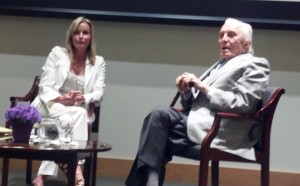(1) If, like me, you’re a fan who has no books for sale yet inexplicably loves knowing all the inside minutiae of the publishing business, don’t miss Patrick Nielsen Hayden’s explanation of eBook territorial sales rights at Whatever, and the charming series of confessions with which it concludes:
Does this sound like a lot of bullshit gobbledegook? Probably. Is it true? Absolutely. Did it happen because everyone rolled out of bed one morning and said “Let’s make global ebook retailing baroquely complicated, because annoying our customers is fun”? No. Does the book industry need to be rethinking how it handles this stuff? Yep. Is it? I think it’s starting to. Meanwhile, you wanted to know why–and that long explanation is the “why.”
(2) George R.R. Martin gets raked over the coals by Cracked (5 Awful Official Websites of People Who Should Know Better) for having a crappy website:
The site could only have been designed by Martin, or someone in his family, because if he’d hired literally anyone who has ever designed a website before, they would never have landed on this particular look. To the site’s credit, it’s not aggressively loud or bright, like a lot of other terrible websites, but it’s still unforgivably simple, and not in an elegant sort of way. More in a “Bullshit, I’ll bet you $500 I can design a fully functioning website in 12 minutes, just watch me” sort of way.
Taral says, “I guess there’s a lesson to be learned — if you’re going to be a household name, you have to keep up with fashions in web page design. I suspect it’s not a lesson most of us need to learn anytime soon…”
(3) Darth Vader was caught on video trying to argue his way out of a parking ticket at a street fair. Lamest use of The Force evah!
(4) Let the nostalgia flow as you watch Bob Shaw in this old 30-minute installment of “Celebration” aired in 1981 on Granada TV. The first half is documentary, the second a short time travel film, Encounter With a Madman, written by Shaw and starring the then unknown Jenny Eclair.
(5) One of the special features on Disc 2 of Arnold Kunert’s DVD Ray Harryhausen: The Early Years Collection (2005) is a 20-minute roundtable discussion with Ray Bradbury, Harryhausen and Forry Ackerman videotaped at Clifton’s Cafeteria in the same Brown Room where they attended LASFL meetings in the late 1930s.
(6) James Patrick Kelly and John Kessel, editors of The Nebula Awards Showcase 2012 discuss the value of awards in The Nebula Awards 2012: A Look Back And A Look Forward on Huffington Post —
Jim: Speaking from personal experience, the impact of a nomination on a new writer can be profound. It’s hard for any writer to know exactly how she is doing, once she starts selling regularly. Income doesn’t necessarily tell the story. Reviews are a crapshoot—are bad reviews worse than no reviews? Readers may or may not check in. And there are no promotions. Nobody gets to be Vice President of Slipstream or Project Manager for Space Opera or Director of the Zombie Division.
Yes, we have to believe in ourselves and know in our hearts that what we have to say is worth saying, but it helps when our colleagues offer some validation. Best-of-the-year editors certainly have this power, but they are individuals whose sensibilities are theirs alone. But when an organization of your colleagues proclaims to the world that you have written an elite story, you have to believe them. I think that helps the next time your curl your fingers over a keyboard.
Y’know, it’s been 29 years since my appearance in Nebula Award Stories Sixteen (an essay, “Whatever Weirdness Lingers”). Thanks for the gig, Jerry!
(7) STAR – San Diego helped prepare a tv/movie memorabilia exhibit for the San Diego County Fair. Look for it in “Area Fifty Fun” in the infield next to the tunnel on the west side of the fairgrounds. The SD County Fair runs through July 8.
[Thanks for these links goes out to John King Tarpinian, Taral Wayne, Michael Walsh and Andrew Porter.]

